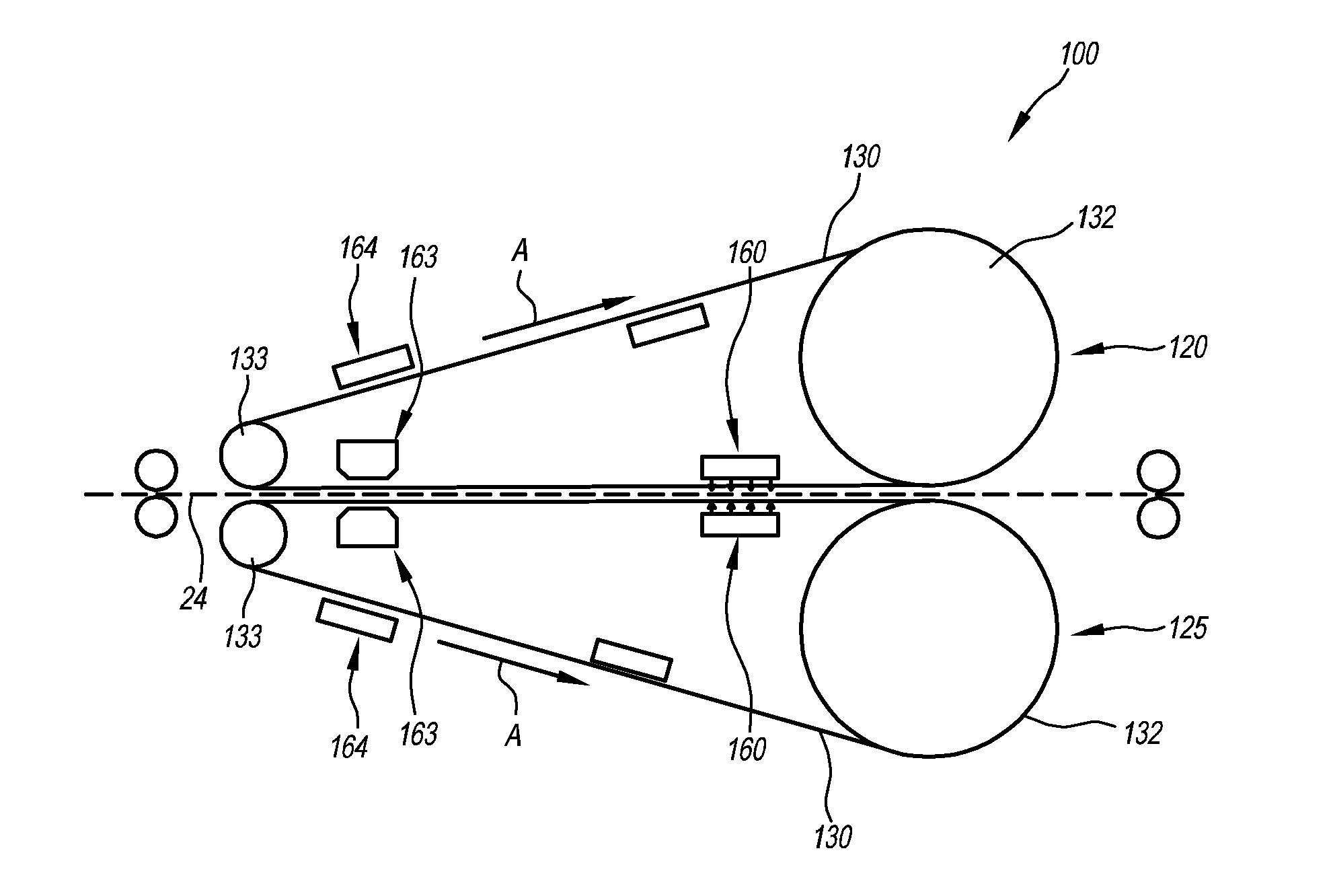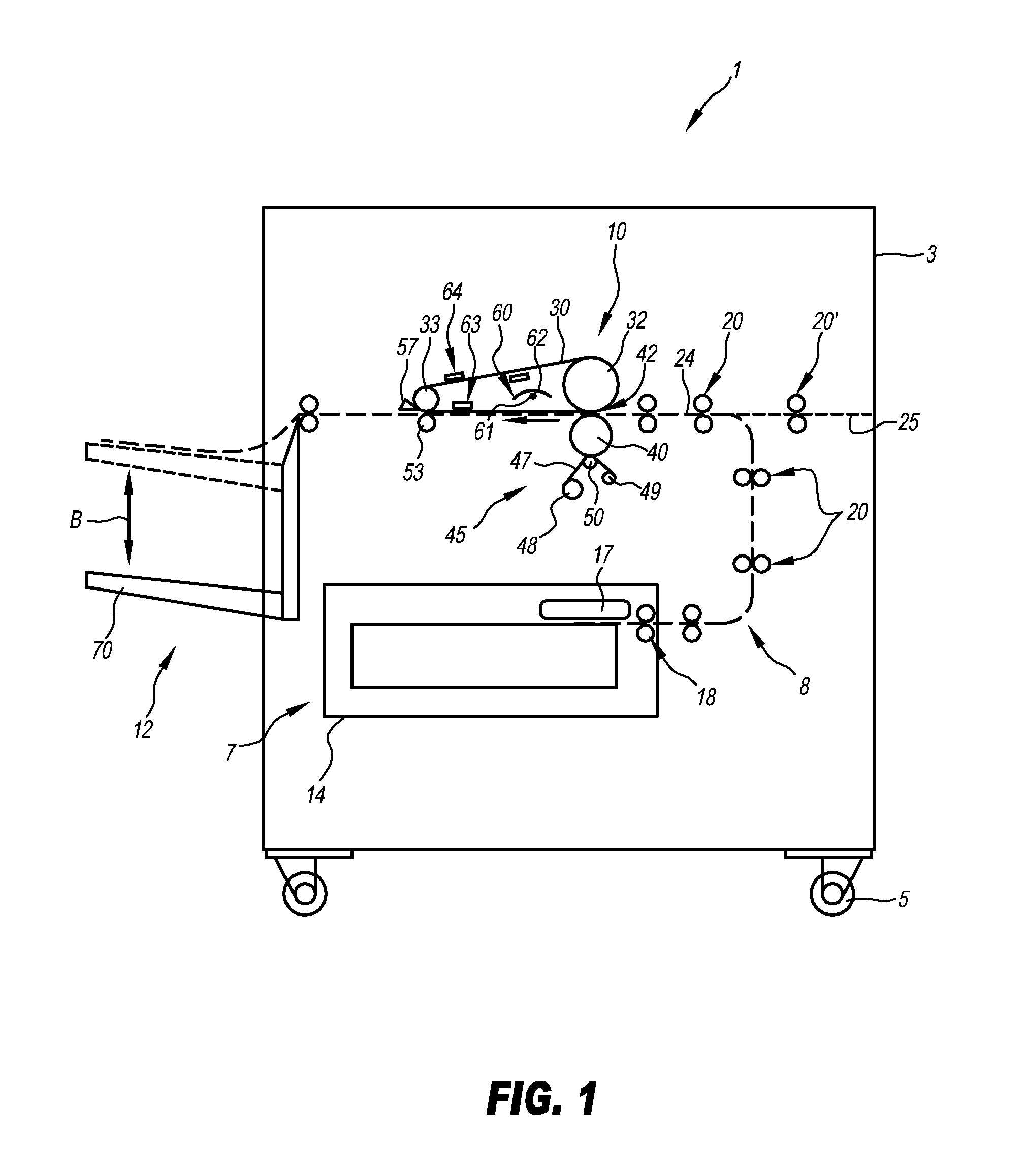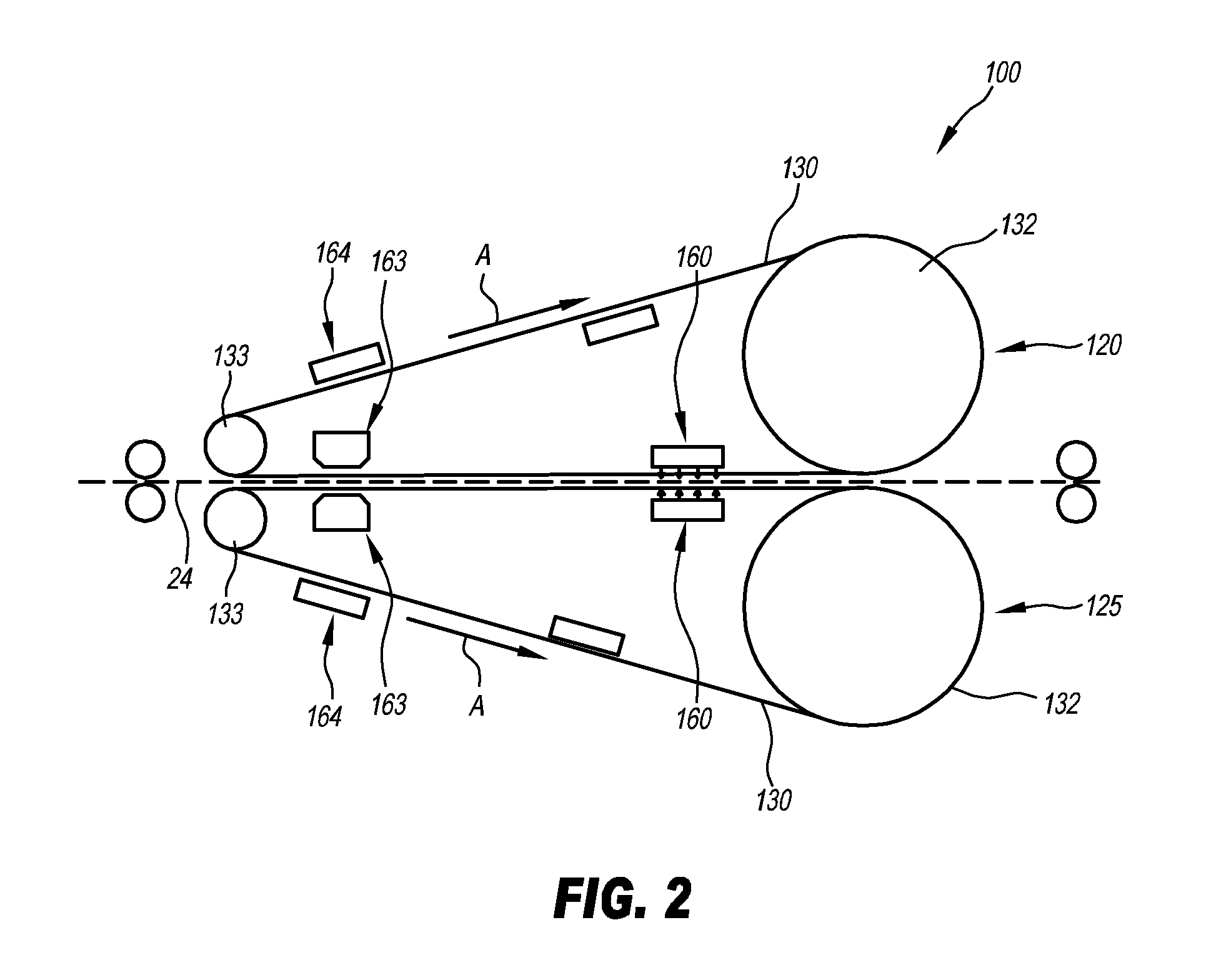Method and device for generating a prespecified gloss pattern on a toner image
- Summary
- Abstract
- Description
- Claims
- Application Information
AI Technical Summary
Benefits of technology
Problems solved by technology
Method used
Image
Examples
Embodiment Construction
[0029]The relative concepts such as, e.g., left, right above and under, used in the description hereinafter relate to the drawings and are not intended to restrict the application in any manner.
[0030]FIG. 1 shows a schematic side view of a glosser device 1 that is depicted as a free-standing unit. However, it may, for example, also be integrated in the paper moving path of a printing machine and, at the same time, serve as a fusing unit in addition to performing its glosser function. As shown, the glosser device 1 comprises a housing 3 that is supported by a plurality of wheels 5 (two of which are shown). The wheels 5 allow a flexible placement of the glosser device 1. Although the housing 3 is shown being supported by wheels 5, it should be noted that the glosser device may also be of the stationary type without wheels 5.
[0031]The housing 3 supports a sheet supply 7, a transport arrangement 8, a glosser arrangement 10 and a sheet tray 12. The sheet supply 7 may be any conventional ...
PUM
| Property | Measurement | Unit |
|---|---|---|
| Fraction | aaaaa | aaaaa |
| Time | aaaaa | aaaaa |
| Length | aaaaa | aaaaa |
Abstract
Description
Claims
Application Information
 Login to View More
Login to View More - R&D
- Intellectual Property
- Life Sciences
- Materials
- Tech Scout
- Unparalleled Data Quality
- Higher Quality Content
- 60% Fewer Hallucinations
Browse by: Latest US Patents, China's latest patents, Technical Efficacy Thesaurus, Application Domain, Technology Topic, Popular Technical Reports.
© 2025 PatSnap. All rights reserved.Legal|Privacy policy|Modern Slavery Act Transparency Statement|Sitemap|About US| Contact US: help@patsnap.com



